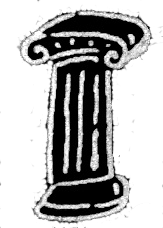Don’t Debunk the Valentine

Photograph by Stephen Ashby
I was first introduced to Valentines in 6th grade at the McCullough elementary school in Detroit. At first I thought it was a class project, but then it became mysterious. It was a competition: who got the most Valentine cards. I only wrote one as it was supposed to be to the one you loved. I wrote mine to Judy - and not her twin sister Joanne -- who was in another class. I could never tell them apart. Judy was a friend. She came to my house after school a few times because then we were both into 'Little Lulu' comics. I got Valentines, but not one from her: My heart wasn't broken. I can't remember what I felt. It would be years before Valentines came back into my life.Valentine’s Day, according to NPR, has a dark history going back to the Romans who happened to execute two men named Valentine on February 14 of two different years in the third century AD. That was part of a brutal and licentious holiday, celebrating fertility. The Catholic Church created a St. Valentine and made February 14 his name day.That day long remained a time of carnal, drunken revelry but as the centuries passed the lascivious turned romantic. Valentine cards appeared in the Middle Ages. Early in the twentieth century Hallmark cards began mass producing Valentines.An industry based on dining out, floral bouquets and boxed candies burgeoned, making a true commodity out of a rather benign little day consecrated to love, romance and possibly sex..
“Love provides the promise of a devoted, caring, protective, nurturing other, a long sustaining relationship.”
.Courtship that begins in the sixth grade is a serious matter, a social provenance that introduces a long chain of gender defining and role scripting. The penalties for deviations, even small private ones, can claim one’s life, can backbend a personality. But it sets a tone. Valentine’s Day becomes a potent symbol, mostly lurking in the deep background until February 14 rolls around. Then being alone or being in some way coupled assumes major significance.https://youtu.be/OYfoGTIG7pYThat bending toward another person, that falling or being in love, is another human activity actuated by the brain. Yes, there is a neurobiologic center for love and romance in the brain, at least two of them. A Harvard Study showed photographs to college students of their main squeeze in one fMRI (functional magnetic resonance imaging) episode and, in the second, a photograph os just an acquaintance. The brain lit up to the viewing of the loved one but not to the other.Two brain regions were implicated: one associated with reward detection and expectation and the integration of sensory experiences into social behavior; the other associated with pleasure, focused attention, and the motivation to pursue and acquire rewards.These brain regions encompass the reward areas of the brain, perhaps analogous to the effect of getting high. Freud unwittingly drew a comparison between love and drug effects: “It is that we are never so defenseless against suffering as when we love, never no helplessly unhappy as when we have lost our loved object of its love.” Love is the driving force not only toward reproduction, which only requires fulfillment of lust, but for affiliation. Love provides the promise of a devoted, caring, protective, nurturing other, a long sustaining relationship.When Martin Luther posted his manifesto in 1617 expositing themes of individualism, emancipation and self-actualization, the age of the individual began its ascent. Love, tied to the value of individual needs and goals, has in the many intervening years acquired greater and grander personal and social value.We expect and demand a level of mutuality that now includes deep recognition and appreciation of the other as companion, lover, progenitor, provider, social adornment, social responder, and sexual performer. Relationships frequently fail on one or many of such key conditions.Love is in danger of never quite realizing all the expectations, all the wishes, all the dreams it is held to promise. Psychotherapy is often a route to re-ordering one’s ideas about self and other and repairing the ways in which we unintentionally thwart love. There other means as well: meditation, religion, peer group confrontation, even just aging and gradual enlightenment.Valentines have become the singular icon of love. We need them to remind us that love is possible. Valentines symbolize and sustain that wish.So give it out. A Valentine means, simply, concisely, and exquisitely— I love you.
Love is the driving force not only toward reproduction, which only requires fulfillment of lust, but for affiliation. Love provides the promise of a devoted, caring, protective, nurturing other, a long sustaining relationship.When Martin Luther posted his manifesto in 1617 expositing themes of individualism, emancipation and self-actualization, the age of the individual began its ascent. Love, tied to the value of individual needs and goals, has in the many intervening years acquired greater and grander personal and social value.We expect and demand a level of mutuality that now includes deep recognition and appreciation of the other as companion, lover, progenitor, provider, social adornment, social responder, and sexual performer. Relationships frequently fail on one or many of such key conditions.Love is in danger of never quite realizing all the expectations, all the wishes, all the dreams it is held to promise. Psychotherapy is often a route to re-ordering one’s ideas about self and other and repairing the ways in which we unintentionally thwart love. There other means as well: meditation, religion, peer group confrontation, even just aging and gradual enlightenment.Valentines have become the singular icon of love. We need them to remind us that love is possible. Valentines symbolize and sustain that wish.So give it out. A Valentine means, simply, concisely, and exquisitely— I love you.
